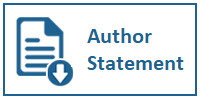ANTESEDEN YANG MEMPENGARUHI REPURCHASE INTENTION PADA APLIKASI LAYANAN PESAN ANTAR MAKANAN (STUDI PADA GOFOOD)
DOI:
https://doi.org/10.31937/manajemen.v14i1.2537Abstract
The industrial revolution 4.0 which is supported by very rapid technological advances creates many opportunities to innovate and create many new business models, which has an impact on the emergence of new technology-based companies, one of which is the emergence of applications that offer online food delivery services such as GoFood. Along with the very rapid growth in the online food delivery service industry such as GoFood, many new competitors are starting to emerge, so it is important for GoFood to be able to retain existing customers and continue to develop its market share. The purpose of this study is to investigate the positive effect of effort expectancy, perceived usefulness, information quality, perceived risk, social influence, and trust toward repurchase intention in GoFood delivery app by distributing questionnaires to people who have used GoFood application services and there were 255 questionnaires that can be used. The technique used for distributing questionnaires is by distributing questionnaires online using 5 Likert scale and the data was processed using the SmartPLS program. There were six hypotheses was tested in this study. Based on the examination, concluded that effort expectancy, perceived usefulness, information quality, perceived risk, and social influence has no positive effect toward repurchase intention, trust has positive effect toward repurchase intention in GoFood delivery app.
Downloads
Downloads
Published
How to Cite
Issue
Section
License
Authors retain copyright and grant the journal right of first publication with the work simultaneously licensed under a Creative Commons Attribution-ShareAlike International License (CC-BY-SA 4.0) that allows others to share the work with an acknowledgement of the work's authorship and initial publication in this journal.
Authors are able to enter into separate, additional contractual arrangements for the non-exclusive distribution of the journal's published version of the work (e.g., post it to an institutional repository or publish it in a book), with an acknowledgement of its initial publication in this journal.















